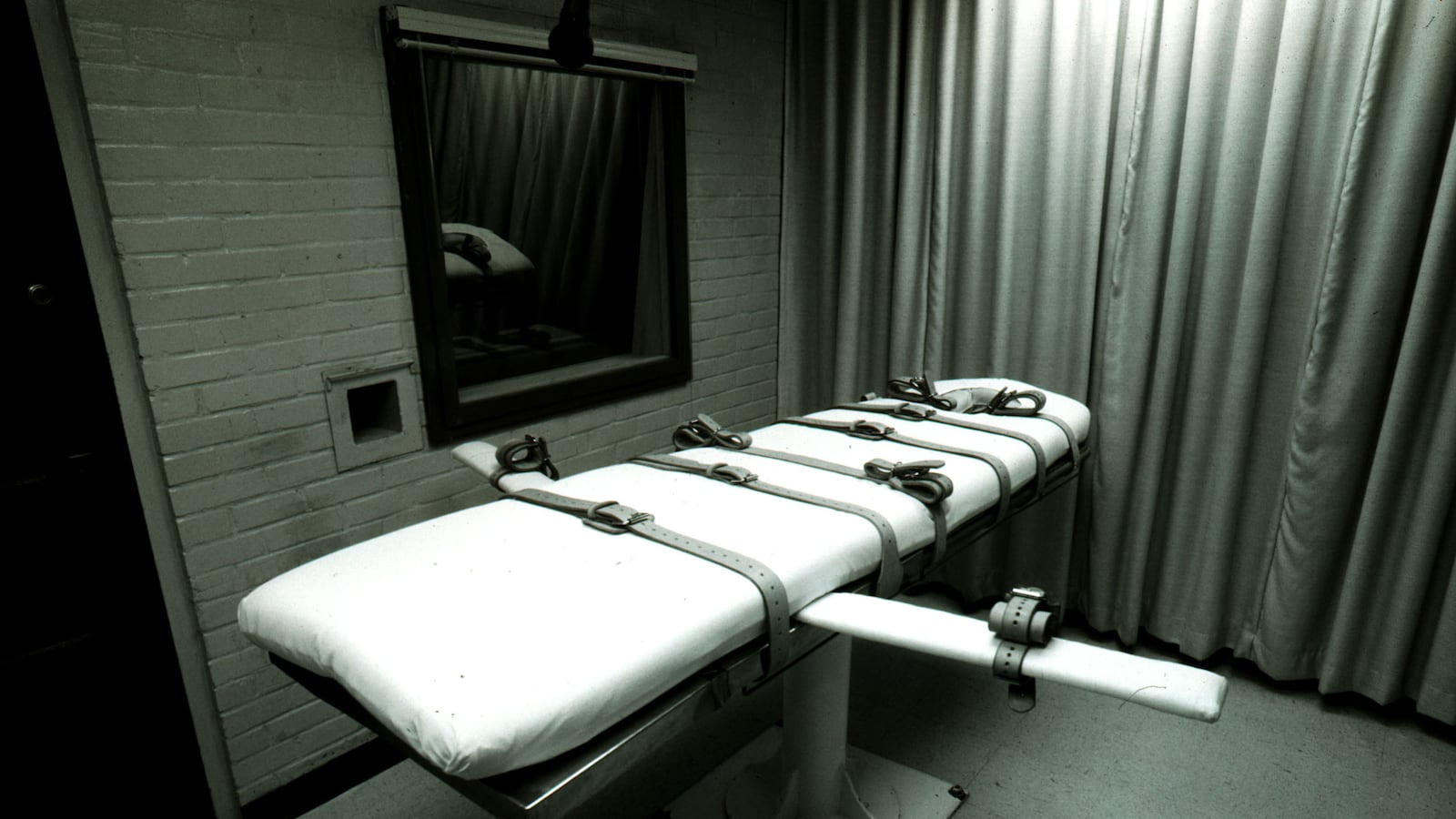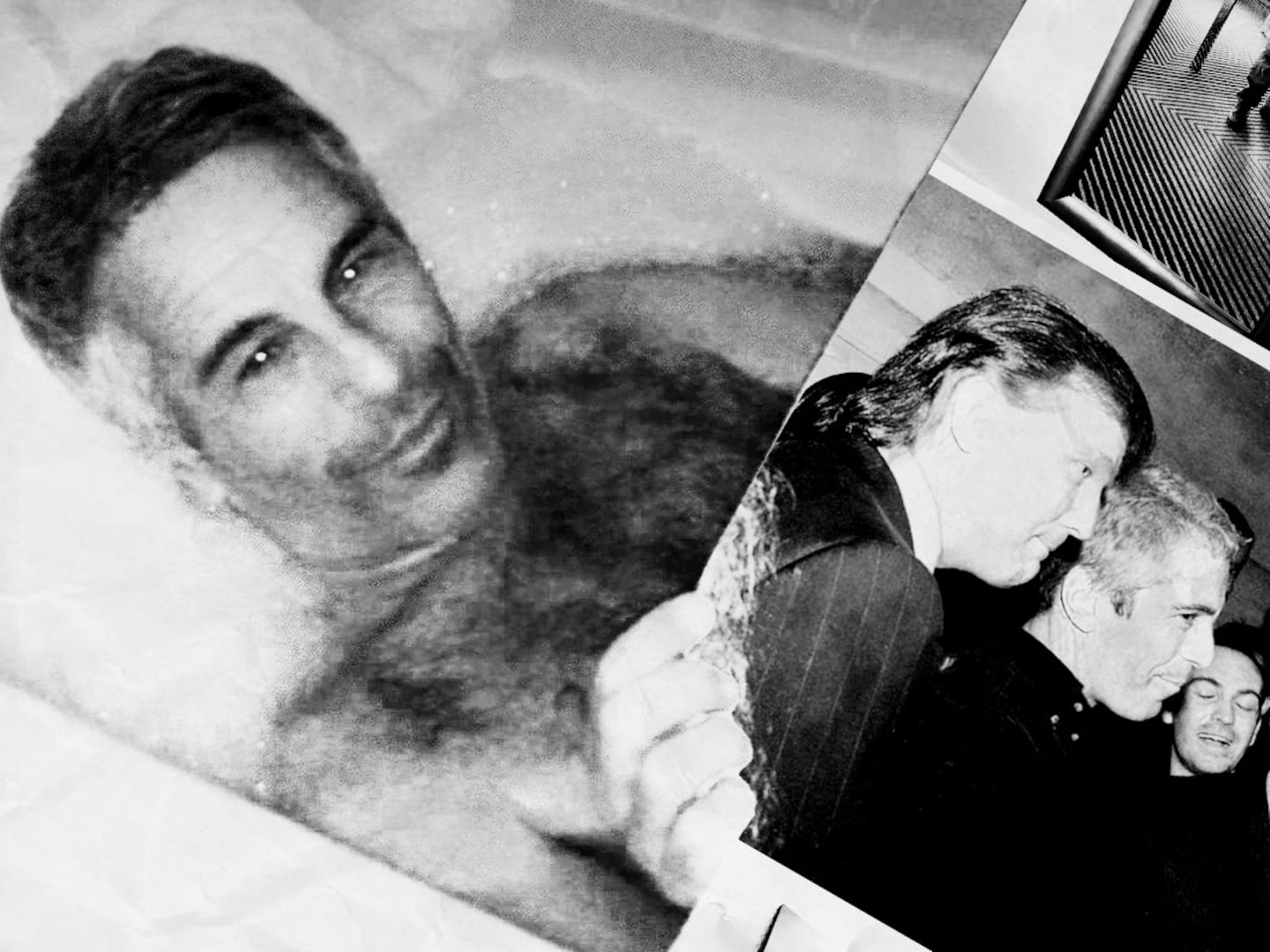Last night the state of Oklahoma added to America’s long history of botched executions when it attempted to execute Clayton Derrell Lockett by lethal injection. At 6.23 p.m., a doctor administered the first drug, which corrections officials identified as the sedative midazolam. What followed was an agonizing spectacle that ended when Lockett died at 7.06 p.m.—43 minutes after the drugs began to flow.

Lockett was pronounced unconscious 10 minutes into the procedure and officials started to administer the second and third drugs: a paralytic intended to prevent respiration and potassium chloride to stop his heart.
Soon after doing so, it became clear that the execution was not going according to plan. Lockett began to convulse violently, his head and chest rising up off the gurney multiple times as he called out, “Oh, man.” At this point, prison officials pulled a curtain in front of the witnesses, and Corrections Department Director Robert Patton announced that he was “stopping the execution” after a “vein failure.” Lockett died minutes later of an apparent heart attack.
The entire execution was cloaked in secrecy. Not only did corrections officials conceal Lockett’s final minutes from the assembled witnesses, but also the deadly chemicals themselves were of unknown provenance. With many pharmaceutical companies refusing to supply drugs for executions, Oklahoma and other states have turned to lightly regulated compounding pharmacies.
In a last-ditch effort to avoid execution, Lockett and Charles Warner, whose execution was also originally set for yesterday, sued to discover the origin of the drugs to be used in their executions. Oklahoma’s Supreme Court initially ruled that the executions should be stayed to avoid a miscarriage of justice, but Governor Mary Fallin said the court had overreached its powers and ordered the executions to go ahead.
Regrettably, Lockett’s gruesome death was far from extraordinary. Earlier this year, on January 16, Ohio executed Dennis McGuire using a previously untested two-drug cocktail that included midazolam, the same sedative used for last night’s execution in Oklahoma. His dying utterance, “I feel my whole body burning,” was widely reported. McGuire gasped for air and clenched his fists as 25 minutes passed between the start of the procedure and the time he was pronounced dead.
Almost a decade ago, the dangerous fallibility of lethal injection was prominently exposed when, in 2006, two botched lethal injections caught the attention of the nation. On May 2 of that year, officials fought for 22 minutes to find a vein in Joseph Clark’s arm and, after the lethal drugs finally began to flow, the condemned man pronounced, “It don’t work.” Clark groaned on for another 30 minutes before he was declared dead over 90 minutes after the procedure began.
Seven months later, Florida’s lethal injection team placed a catheter incorrectly and, according to official witnesses, Angel Diaz braced against the straps, grimaced, and attempted to mouth words for nearly a half-hour after the procedure began. He died only after a second dose was administered.
From the end of the 19th century to the present day, the United States has actively tried to find new ways to avoid such mishaps and impose death without unnecessary pain of the kind seen most recently when lethal injections go wrong. The continuing search for an execution method that would prove unfailingly humane and civilized has helped assuage the sensibilities of the American public and to emphatically set capital punishment apart from the heinous crimes it is thought to condemn. Through successive changes in methods of execution, from hanging to electrocution, from the gas chamber to lethal injection, the U.S. has struggled to make the practice of capital punishment appear peaceful and precise and transform execution from dramatic spectacle to a cool, bureaucratic operation.
But we have found no technology which could reliably and effectively achieve this goal. We have sent condemned criminals to the gallows, executed them by firing squad, electrocution, lethal gas, or using a cocktail of deadly chemicals. Each of these methods of execution was, at the time of its introduction, said to be able reliably to impose death without the unnecessary suffering condemned by the Eighth Amendment’s prohibition of “cruel and unusual punishment.” None has delivered on that promise.
In recently completed research, we and our collaborators examined all American executions from 1890-2010. We found that 3 percent of those executions were botched in one way or another, from the slow strangulations and decapitations that occasionally occurred during hangings to the smoke and burning flesh of the electric chair to the agonizing death throes of those strapped to gurneys in lethal injection chambers. In fact, executions by lethal injection are botched at a higher rate than any of the other methods employed since the late-19th century, 7 percent.
Botched executions have not been the particular plague of a handful of states or of a single inadequate technology. Rather, they have happened in every region of the country regardless of the frequency of executions carried out. And each and every method of execution has its distinctive flaws, which frequently have been compounded by malfeasance or simple human error.
In the hours and days following executions gone wrong, the public gets a rare look beyond the image of highly controlled, efficient, and dignified executions that the government seeks to project. But, all too often, the initial wave of shock and horror soon gives way to resignation and the tendency to dismiss botched executions as mere accidents.
But history teaches a different lesson. Botched executions are neither freak occurrences nor unfortunate accidents. Rather, like the errors that occur when innocent people are sentenced to death, they are an inherent and unavoidable part of the system of capital punishment in the United States.
Just as Americans are today asking themselves whether running the risk of executing the innocent is an acceptable price to pay for maintaining the death penalty, we should be asking whether we want to run the risk of witnessing additional botched executions like those of Lockett, McGuire, Clark, and Diaz. Just as Americans are beginning to acknowledge the damage that executing the innocent would do to our moral values and constitutional commitments so too we should acknowledge that no technological magic bullet can insure that people can be executed without the kind of cruel assaults on human dignity that our Constitution rightly condemns.






